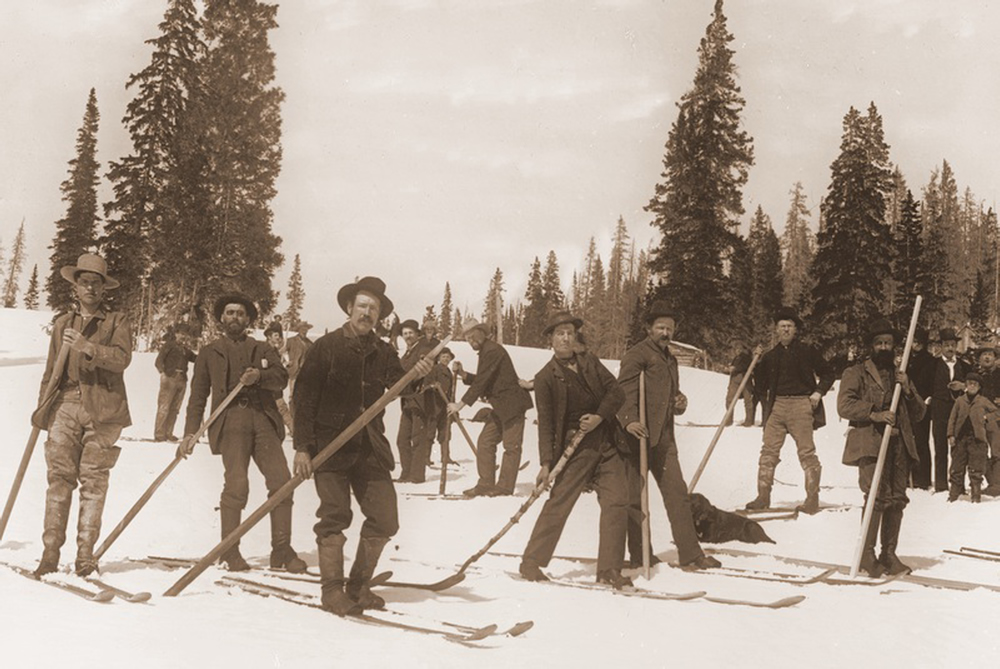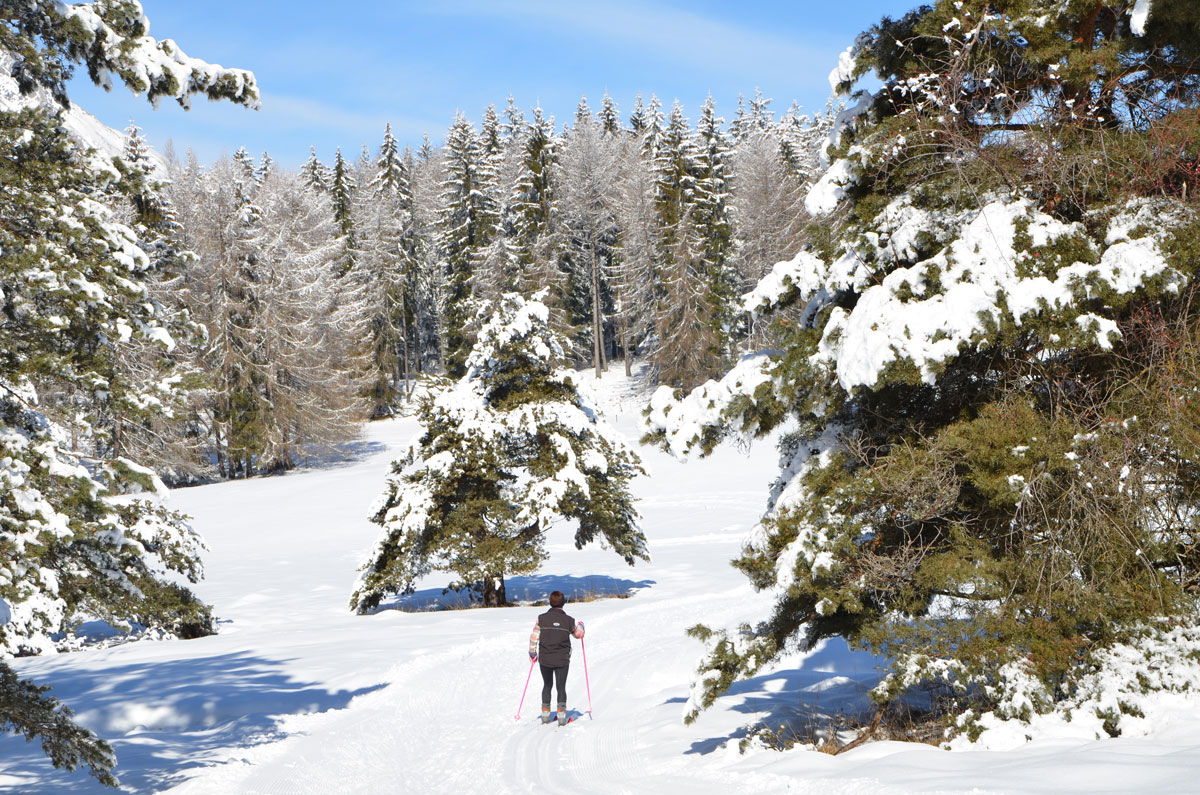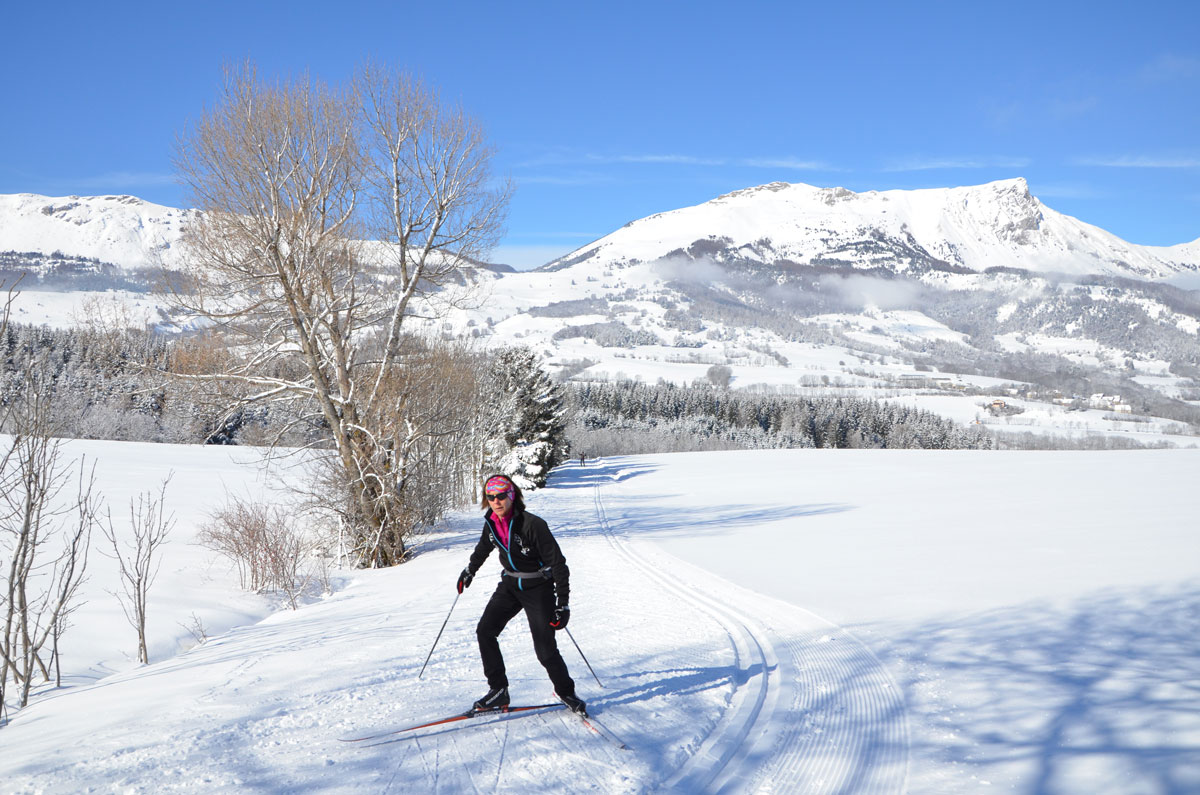Preparing for a Snowshoeing Adventure: 5 Fitness Tips for the Over 50s
“Will I be fit enough to enjoy snowshoeing in the Alps?” This is one of the most common question
Read MorePosted 10-12-2019 by Sally Guillaume
The terms “Nordic skiing” and “cross country skiing” are often used interchangeably. In the wider sense, cross country skiing is a variation of Nordic skiing, and Nordic skiing encompasses a number of other disciplines too. The confusing nature of wording is an age-old problem within the sport, and often has skiing beginners feeling puzzled. What’s even more confounding about the use of the terminology is that they have a different meaning depending on where you are.
For instance, in the Alps they have termed “Nordic skiing” for any off-piste skiing traversing in undulating, lower level terrain as opposed to bigger mountains with steep slopes, which they call 'ski randonnée' or ski touring. This terminology adopted by the French is because they associate the word Nordic with the rolling undulating landscapes of Scandinavia. As such they call their cross country ski areas, nordic domains, but these generally include pisted runs and skiing on pisted runs is known as 'ski de fond' by the French which translates into cross country skiing as opposed to nordic skiing which is off piste.
We have adopted this interpretation for our cross country skiing holidays in the Alps where we use nordic ski domains for cross country skiing on pistes. If you need any help clarifying the different skiing types or finding the best one for you, just ask. We understand that skiing classifications aren’t always straightforward, so we’d be happy to talk you through.
Book A Cross Country Skiing Trip
To help understand the subtleties, it is useful to understand the history of how the terms Nordic skiing and cross country skiing evolved.
.jpg)
The evolution of Nordic skiing came about when Scandinavians used boards as a mode of transport to get across the snow, and later poles to help them travel faster. This started over 5,000 years ago, and has seen many developments over the centuries. Long single poles were used by the Finnish in the early 1500s, and by the late Middle Ages, some great advancements had been made.
By the 1800s, this way of transport turned into a recreational activity. This is when Sondre Norhem from the region of Telemark in Norway produced the first ski binding. The first race on record was in 1842 and by the 1930s, the Olympics made clear definitions between classic downhill skiing and Nordic skiing based on the types of binding to be worn. But over the years, many styles of Nordic skiing have arisen, the main ones being cross country, telemark skiing and alpine touring.
Today, the terminology if often used in confusing ways in different parts of the world, but here we try to explain it all.

Compared to the normal downhill skiing at resorts, Nordic skiing has a free-heel binding system, different to the flat-foot bindings of alpine skis. In terms of equipment, Nordic skis are much lighter and narrower, making them easier to manoeuver in. But all the different styles of Nordic skiing will differ slightly in terms of equipment.
Out of all the styles, classic cross country style is what most people will try first. It’s the most popular form of Nordic skiing and takes place on maintained tracks, with parallel grooves in the snow acting as a guides for your skis. If you’re moving from downhill to Nordic / cross country for the first time, the classic stride is perhaps the easiest to familiarise yourself with.

The three forms of Nordic skiing are cross-country, telemark and alpine touring. Then within cross country, there are a number of sub-categories too. Here they are:
With cross country, there’s a style to suit everyone. There’s a lot of versatility, and it’s possible to go on and off-trail when cross country skiing. However, it’s important to understand the differences of each form as the equipment you need will vary.
Here are the three styles to know:
The classic stride is the most popular and is the easiest to learn as it takes place on tracks that help you glide along without having to exert too much energy. The technique involves sliding one foot directly forward followed by the other foot, and using poles alternately. Arms are moved diagonally to the legs, and this is known as the “diagonal stride”. This forms a very normal rhythm, just as you would when you walk.
You can do this at speed for a brilliant cardio workout, or you can slowly amble for a less intense ski session. The difference between fast and slow is like the difference between running and walking, making cross country skiing suitable for people at all levels. First-timers can take on the terrain at their own pace.
Classic cross-country skis are designed to be stiff, narrow and lightweight. They have scales on the underside to help prevent you slipping backwards and they allow you to glide quickly and smoothly on the snow.
-3.jpg)
This stride is very similar to ice skating, thus the name. The skier pushes the ski diagonally to propel themselves forward, but unlike ice skating you’ll only really pick up speed when you put in lots of effort as you won’t have as much momentum as on ice. You will need to use lateral movements and shifts in body weight to create a forward motion.
Skate skiing must be done on wide groomed trails, and it’s not possible to skate off-piste. This is because the skating technique and equipment work best on hard, compacted snow. In term of equipment, skate cross country skis are very similar to the classic ones, but are normally shorter, don't have the scales on the underside and have better torsional resistance.

For those who are feeling a little more adventurous and want to try off-piste skiing, light touring is an ideal introduction. Light touring skis are an evolution of classic cross country skis with the same free heel binding but usually slightly wider in shape giving the wearer added sturdiness and support when they venture onto ungroomed paths.
The equipment is made to be versatile so it can adapt between well-maintained trails and off-piste terrain. This means that when it comes to going off-trail, you should stick to mild ungroomed areas like a snow-covered park rather than the wilderness.
.jpg)
The name “telemark” comes from the Telemark region of Norway, home to famous skier Sondre Norhem in the 1800s. He was the pioneer of modern skiing, and his statue can be seen at the Norwegian Ski Museum in Morgedal, the sport’s important birthplace.
Named after his home town, telemark skiing is a technique that combines elements of downhill / alpine skilling with Nordic skiing. The style allows skiers to explore the backcountry and climb steep terrain, while also being able to ski downhill when necessary.
Compared to cross country skis, the equipment is stronger and firmer, very similar to what you may know with your normal downhill skis. Their robust design ensures that you’ll be able to take on both uphill and downhill exploration, but you’ll have a binding and boot system that gives you free heel movement.
Functionally, alpine touring skis and telemark skis accomplish the same thing. Both designs are built to allow backcountry exploration and the functionality for steep inclines and sharp downhills. Just like telemark skis, you’ll find them to be stiffer and sturdier than cross country skis, but alpine touring skis have a completely different heel.
Unlike the free-heel of telemark skis, alpine touring skis have bindings that allow you to have a free heel on the ascent and then lock down the heel for the descent. In this sense, they are much closer in design to the traditional downhill ski.
This style of skiing is extremely popular with mountaineers, and because of the versatility you can get to the most breath-taking backcountry locations while still being able to have a good old fashioned ski like you would on the slopes.
.jpg)
This is where it can get really confusing for some skiing beginners. Because while the definitions we’ve supplied above are generally understood worldwide, the terms “Nordic” and “cross country” can appear to mean different things in the Alps. But really this is just a case of lost in translation!
When the French refer to the sport taking place on groomed pistes, the French name is 'ski de fond' of which there is the 'alternative' technique, the classic style sliding one ski in front of the other in parallel and 'skating technique', the skating style. Anglophones in France have translated this into the general term of 'cross country skiing' rather than use the French words.
So in France the phrasing when translated is often understood as:
Cross country skiing as skiing that takes place on groomed undulating pistes, with parallel grooves in the snow acting as a guides for your skis. This can include the classic stride and skate skiing as described above.
and...
Nordic skiing touring as any style of skiing that goes off-trail or off-piste in undulating valleys and less steep mountains, what they would call 'Nordic terrain'. This is 'light touring' in our above descriptions. This form usually takes you over snowfields, but not steep slopes so would be different to telemark and alpine touring.
However the French will also use the term 'Ski Nordique' or 'Nordic skiing' to encompass all the above and refer to Nordic ski domains and Nordic activities to include anything that happens in what they describe as 'Nordic areas' were the terrain is undulating rather than steep. This can include husky sledding, ski joering as well as snowshoeing and cross country skiing.
.jpg)
Ski touring is a term used to describe travelling through snow covered terrain, using skis to go both uphill and downhill. This style can be practised anywhere in the world with snow, but the most popular destination for this is the Alps – particularly for UK based ski-tourers. In France the term is ski randonnée.
Both alpine touring and telemark skiing fall into this category. But you may hear other names being used globally, such as “ski mountaineering” or “backcountry skiing” (especially in the US).
The key defining feature of ski touring is that you’ll be taking on steeper mountains, meaning it can be a dangerous sport at times, best suited to more experiences skiers and mountaineers. As you will be skiing downhill in off piste conditions, a good technical level of downhill skiing is a pre-requisite for ski touring.
There are so many styles of skiing that it can often be overwhelming for first-timers transitioning from classic downhill. Here are some deciding factors to help you choose the right one:
The easiest sport to get into is classic cross country skiing, and this is because it can adapted to skiers of all levels, abilities and fitness. With classic cross country, you have the option of going fast or slow. Ski fast and dynamically for a good aerobic workout or amble away to your heart’s content taking in the lovely mountain views.
Skiing on groomed pistes also gives you a certain level of guidance as the grooves in the snow help to keep you skis on track. Once you’ve mastered on-piste skiing, you can take on the exciting challenge of off-piste.
All types of Nordic skiing differ from downhill skiing. If you’re used to hitting the slopes at your favourite resort, you can tap into your knowledge and understanding of the basics. But practice is a must when it comes to adjusting your technique.
It can be easy to take baby steps with cross country skiing styles, as you can take it at your own pace and pick up speed when you’re comfortable. The groomed pistes also act as a guide to assist you with your technique. But a lot of training will be required if you decide to go into the wilderness. Light touring can be the perfect transition, as it allows you to explore maintained tracks as well as mild ungroomed areas. Have a look at this cross country skiing holiday in Norway which transitions from classic cross country skiing to light ski touring off piste with an overnight in the wilderness.
.jpg)
With any off-piste skiing, it goes without saying that scenery is a massive draw for enthusiasts. Left to your own devices, you’ll be able to experience the vistas of the primitive wilderness far away from crowded resorts. When you go off-piste, you’re entering into the backcountry and you’ll be exploring uninhabited slopes, so the views are superior. However, that’s not to say that you can’t get a similar experience with the wonderfully picturesque ski resorts and national parklands of the French Alps or the Norwegian mountains.
All of the sports offer some level of variety for the skier. Classic cross country is varied because it allows skiers to determine their own speed and intensity. It can range from gentle movements to a serious cardio workout. Some prefer the fun element of skate skiing, which allows for much faster and exciting runs. The whole cross country category is interesting and offers something for everyone. When you go off-trail, the variety is everywhere as you’ll be able to explore any terrain you desire within reason.
-11.jpg)
Most popular ski resorts have a nordic ski domain with cross country skiing so it is widely available across Europe. And as off-piste skiing is becoming more and more popular across the world, ski touring routes are popping up everywhere in the mountains, although telemark skiing is traditionally more practised in Scandinavian countries.
The safest styles of skiing are always on groomed tracks. Going off into the wilderness requires a lot of skill, talent and knowledge of snow and mountain safety. It’s exponentially more difficult than regular skiing, so extensive training may be needed. It’s physically demanding too, so skiers must be fit and sufficiently fuelled before they head out.
Any off-piste skiing poses the risk of avalanche, so never go out on your own and make sure you are experienced and knowledgeable about avalanche safety. The safest way to get out into the backcountry is with a professional guide. Have a look at our ski touring holidays in France.
“Will I be fit enough to enjoy snowshoeing in the Alps?” This is one of the most common question
Read MoreEvery summer, the southern French Alps region offers a rare and exhilarating opportunity for cyclist
Read MoreThe higher you go, the better the view - right? It is true that the hours of sweat put in to get to
Read MoreCross-country skiing is often overlooked in favour of other winter sports, but it stands out as one
Read More
2 comments
Submit a comment
Marilyn Sandford
Ants Neo